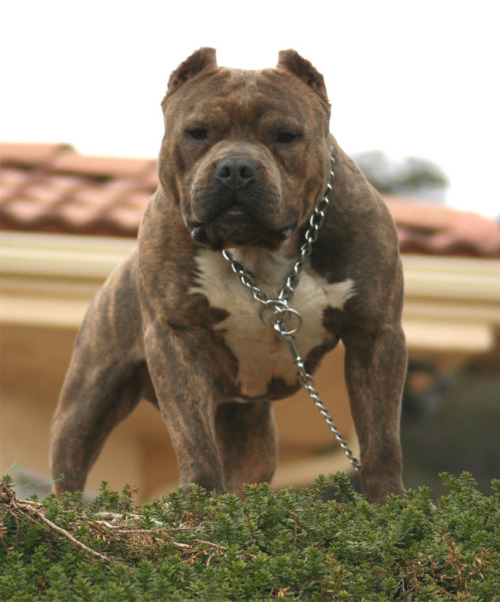Last July, several law enforcement agencies combined forces with the Humane Society of Missouri to conduct the largest dogfighting sting in U.S. history. They raided 22 locations in 8 states, arrested 26 people and rescued more than 400 fighting dogs.
After the operation was complete, workers from the Humane Society and the American Society for the Prevention of Cruelty to Animals (ASPCA) collected DNA samples from every pit bull that was seized in the operation.
Scientists from UC-Davis cataloged all the information and, yesterday, they announced that a database of dogfighting bloodlines is now officially up and running.
Investigators believe the database, officially called the Canine Combined DNA Index System, can be used to prosecute future dogfighting suspects by tying their animals to other known dog fighting rings.
"We know all these networks buy and sell dogs in a fairly small circles," says Tim Rickey, the former head of the Animal Cruelty Task Force of the Humane Society of Missouri. "This will be an import tool. They can tie animals back to one or more convicted dogfighters and show they're from the same bloodline. It's a solid piece of evidence in a criminal case."
Rickey, who took over as the ASPCA's Senior Director of Field Investigation and Response after the July bust, said he had the idea of the database in mind even before the investigation was completed last year.
"We discussed how we could use this case to create more effective tools for law enforcement," he says. "This was a tool that came to the forefront. We planned how it would work and spent months and months discussing and developing it before it got launched."
Here's an explanation of how the system works and what it might mean for future dogfighting cases, via the ASCPA:
After the operation was complete, workers from the Humane Society and the American Society for the Prevention of Cruelty to Animals (ASPCA) collected DNA samples from every pit bull that was seized in the operation.
Scientists from UC-Davis cataloged all the information and, yesterday, they announced that a database of dogfighting bloodlines is now officially up and running.
Investigators believe the database, officially called the Canine Combined DNA Index System, can be used to prosecute future dogfighting suspects by tying their animals to other known dog fighting rings.
"We know all these networks buy and sell dogs in a fairly small circles," says Tim Rickey, the former head of the Animal Cruelty Task Force of the Humane Society of Missouri. "This will be an import tool. They can tie animals back to one or more convicted dogfighters and show they're from the same bloodline. It's a solid piece of evidence in a criminal case."
Rickey, who took over as the ASPCA's Senior Director of Field Investigation and Response after the July bust, said he had the idea of the database in mind even before the investigation was completed last year.
"We discussed how we could use this case to create more effective tools for law enforcement," he says. "This was a tool that came to the forefront. We planned how it would work and spent months and months discussing and developing it before it got launched."
Here's an explanation of how the system works and what it might mean for future dogfighting cases, via the ASCPA:
The database is similar to the FBI's human CODIS, a computerized archive that stores DNA profiles from criminal offenders and crime scenes and is used in criminal and missing person investigations. DNA analysis and matching through the database will help law enforcement agencies to identify relationships between dogs, enabling investigators to establish connections between breeders, trainers, and dog-fight operators. Blood collected from dog fighting sites will also be searched against the Canine CODIS database to identify the source.
"The Veterinary Genetics Laboratory has one of the largest sample databases in the world, said Beth Wictum, Director of the Forensics Unit of the Veterinary Genetics Laboratory in UC Davis School of Veterinary Medicine. "This is important for estimating the rarity of a DNA profile. The Canine CODIS database is unique because it includes many more DNA markers than are normally tested, and that provides greater power when calculating match probability or assigning parentage."
"The Veterinary Genetics Laboratory has one of the largest sample databases in the world, said Beth Wictum, Director of the Forensics Unit of the Veterinary Genetics Laboratory in UC Davis School of Veterinary Medicine. "This is important for estimating the rarity of a DNA profile. The Canine CODIS database is unique because it includes many more DNA markers than are normally tested, and that provides greater power when calculating match probability or assigning parentage."
_____________________
This is a very interesting article and I must applaud the scientists who developed it as it might help in bringing justice into the world of dog fighting in some form or fashion. I do not think that the picture they used is an American Pit Bull Terrier though. He is very large and squatty.


No comments:
Post a Comment